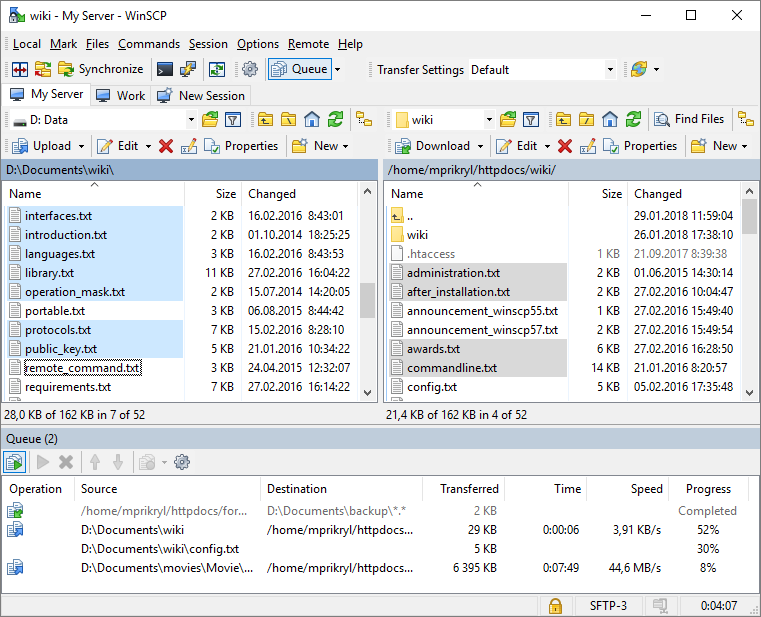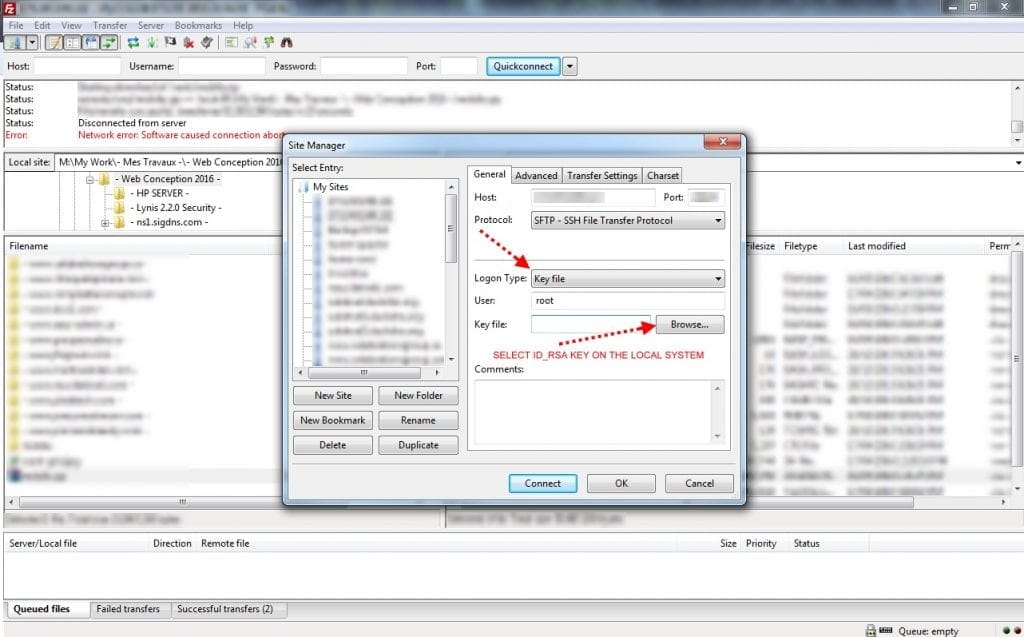

Now you should be able to login as root with your SSH keys. Fill the user name assigned for you in the User box and Select Connect. Enter the server address you want to connect in the Host box and Port box with 22. Select SFTP SSH File Transfer Protocol in Protocol box. Choose New site from the box that appeared. If the SFTP Protocol is specified, it is possible to specify the Logon Type as "Key File" and specify the location of the private key file ( my-ssh-key). Select the installed Filezilla from the menu bar.

This provides one-place management for settings such as. On OSX and Linux, the standard way of doing things is for all SSH configuration management to take place in this one centralised file. This is done (I believe) in the profile settings in the Site Manager of the FileZilla client. There are several useful things in /.ssh/config that would enhance FileZillas SFTP features on OSX and Linux. FileZilla Client supports the former, but not the latter. SFTP is just like FTPing over the SSH2 protocol, while SSH2 itself is the complete secure shell. Copy the contents of my-ssh-key.pub into this file: /root/.ssh/authorized-keys (using sudo access).Ĭonfigure FileZilla to use Key logon. You have to differentiate between SFTP and SSH2.

Login to Ubuntu with your account with sudo access. Generate an SSH keypair, if you don't have one (can be done with this command: ssh-keygen -t rsa -b 2048 -f my-ssh-key - this will generate 2 files: my-ssh-key and my-ssh-key.pub). In order for you to log in as root with FileZilla (or any other SFTP tool), you need to setup SSH key authentication. Root access with password is disabled by default on Ubuntu. Disclaimer: I'm not an expert on FileZilla, so for specific instructions please refer to FileZilla documentation.


 0 kommentar(er)
0 kommentar(er)
